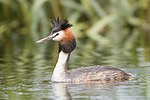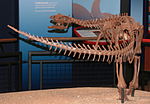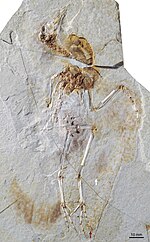The International Code of Phylogenetic Nomenclature, known as the PhyloCode for short, is a formal set of rules governing phylogenetic nomenclature. Its...
27 KB (2,891 words) - 21:08, 11 November 2024
taxa, including the PhyloCode, the Duplostensional Nomenclatural System, and circumscriptional nomenclature. The botanical code is applied primarily...
26 KB (2,534 words) - 13:08, 1 August 2024
Queiroz, Kevin (29 April 2020). International Code of Phylogenetic Nomenclature (PhyloCode): A Phylogenetic Code of Biological Nomenclature. Boca Raton, Florida:...
69 KB (6,803 words) - 00:22, 21 October 2024
in all nomenclatural systems for taxonomists; for instance, the PhyloCode, the code of phylogenetic nomenclature, does not require absolute ranks. Taxa...
59 KB (5,843 words) - 08:31, 15 November 2024
nomenclature is regulated currently by the International Code of Phylogenetic Nomenclature (PhyloCode). Phylogenetic nomenclature associates names with clades...
37 KB (4,675 words) - 10:38, 16 November 2024
; de Queiroz, Kevin (2000). International Code of Phylogenetic Nomenclature (PhyloCode): A Phylogenetic Code of Biological Nomenclature. Boca Raton, Fl:...
11 KB (1,206 words) - 23:40, 18 November 2024
tilletti. In 2021, Iguanodontia was given a formal definition under the PhyloCode: "The smallest clade containing Dryosaurus altus, Iguanodon bernissartensis...
18 KB (1,519 words) - 17:23, 19 November 2024
priority before the PhyloCode is implemented to govern it. In fact, the name Ornithosuchia may be "illegal" under the PhyloCode because it does not include...
22 KB (2,116 words) - 22:42, 20 November 2024
paleognaths in an expanded Struthioniformes). Palaeognathae was defined in the PhyloCode by George Sangster and colleagues in 2022 as "the least inclusive crown...
50 KB (5,559 words) - 14:48, 20 November 2024
course of evolution during the Mesozoic Era. This clade was defined in the PhyloCode by George Sangster and colleagues in 2022 as the least inclusive crown...
6 KB (419 words) - 03:05, 15 October 2024
of the Nodosauridae to be Cedarpelta. Following the publication of the PhyloCode, Nodosauridae needed to be formally defined following certain parameters...
33 KB (2,118 words) - 21:55, 19 November 2024
Reptiliomorpha (meaning reptile-shaped; in PhyloCode known as Pan-Amniota) is a clade containing the amniotes and those tetrapods that share a more recent...
28 KB (2,968 words) - 14:17, 19 November 2024
Galloanserae (ducks, chickens and kin). This group is defined in the PhyloCode by George Sangster and colleagues in 2022 as "the most inclusive crown...
39 KB (1,412 words) - 15:40, 21 November 2024
Species (section Identification codes)
specialists, is not governed by the Codes of Zoological or Botanical Nomenclature, in contrast to the PhyloCode, and contrary to what is done in several...
103 KB (10,535 words) - 00:42, 19 November 2024
International Code of Zoological Nomenclature Virus nomenclature – used in Virus classification Enzyme nomenclature PhyloCode (the International Code of Phylogenetic...
33 KB (3,969 words) - 18:05, 30 October 2024
news agency Champions of Regnum, a computer game An online database for PhyloCode This disambiguation page lists articles associated with the title Regnum...
273 bytes (66 words) - 20:11, 4 April 2019
stenops". In 2021, Neornithischia was given a formal definition under the PhyloCode: "The largest clade containing Iguanodon bernissartensis and Triceratops...
14 KB (953 words) - 17:03, 19 November 2024
used as a homonym for Pelecaniformes. Pelecanimorphae is defined in the PhyloCode by George Sangster and colleagues in 2022 as "the least inclusive clade...
5 KB (315 words) - 03:01, 15 October 2024
Lepidosauromorpha (in PhyloCode known as Pan-Lepidosauria) is a group of reptiles comprising all diapsids closer to lizards than to archosaurs (which...
8 KB (736 words) - 11:23, 27 September 2023
as Ichthyornis and the hesperornithines. This clade is defined in the PhyloCode by Juan Benito and colleagues in 2022 as "the smallest clade containing...
7 KB (573 words) - 14:45, 21 October 2024
priority. However, in formalizing the clade following the regulations of the PhyloCode, Madzia, Boyd, and colleagues identified in 2021 that Sternberg was the...
14 KB (1,265 words) - 22:35, 1 November 2024
modern birds than to the enantiornithines. This group was defined in the PhyloCode by Juan Benito and colleagues in 2022 as "the largest clade containing...
12 KB (744 words) - 15:15, 15 October 2024
owls and woodpeckers, among others). This grouping was defined in the PhyloCode by George Sangster and colleagues in 2022 as "the least inclusive crown...
12 KB (977 words) - 01:18, 2 November 2024
water + Greek ornithes, birds), or core water birds, are defined in the PhyloCode as "the least inclusive crown clade containing Pelecanus onocrotalus and...
9 KB (711 words) - 16:32, 30 October 2024
Euoplocephalus, and Saichania. Ankylosaurinae is formally defined in the PhyloCode as "the largest clade containing Ankylosaurus magniventris, but not Shamosaurus...
5 KB (267 words) - 18:22, 20 November 2024
discovered on all continents. The group has officially been defined under the PhyloCode as the largest clade containing Saltasaurus loricatus, but not Giraffatitan...
5 KB (228 words) - 15:00, 27 July 2024
also included. In 2021, Daniel Madzia redefined Rhabdodontomorpha in the PhyloCode as "the largest clade containing Rhabdodon priscus, but not Iguanodon...
8 KB (681 words) - 22:42, 19 November 2024
species of basal angiosperms. It is a name created under the rules of the PhyloCode system of phylogenetic nomenclature. While such a clade with a similar...
11 KB (1,173 words) - 06:36, 19 September 2024
appear to be the sister group of Afroaves. This clade was defined in the PhyloCode by George Sangster and colleagues in 2022 as "the least inclusive crown...
8 KB (593 words) - 03:04, 15 October 2024
the derived taxa that lack them. The clade is formally defined in the PhyloCode as "the largest clade containing Hadrosaurus foulkii, but not Probactrosaurus...
11 KB (866 words) - 03:10, 12 November 2024
























